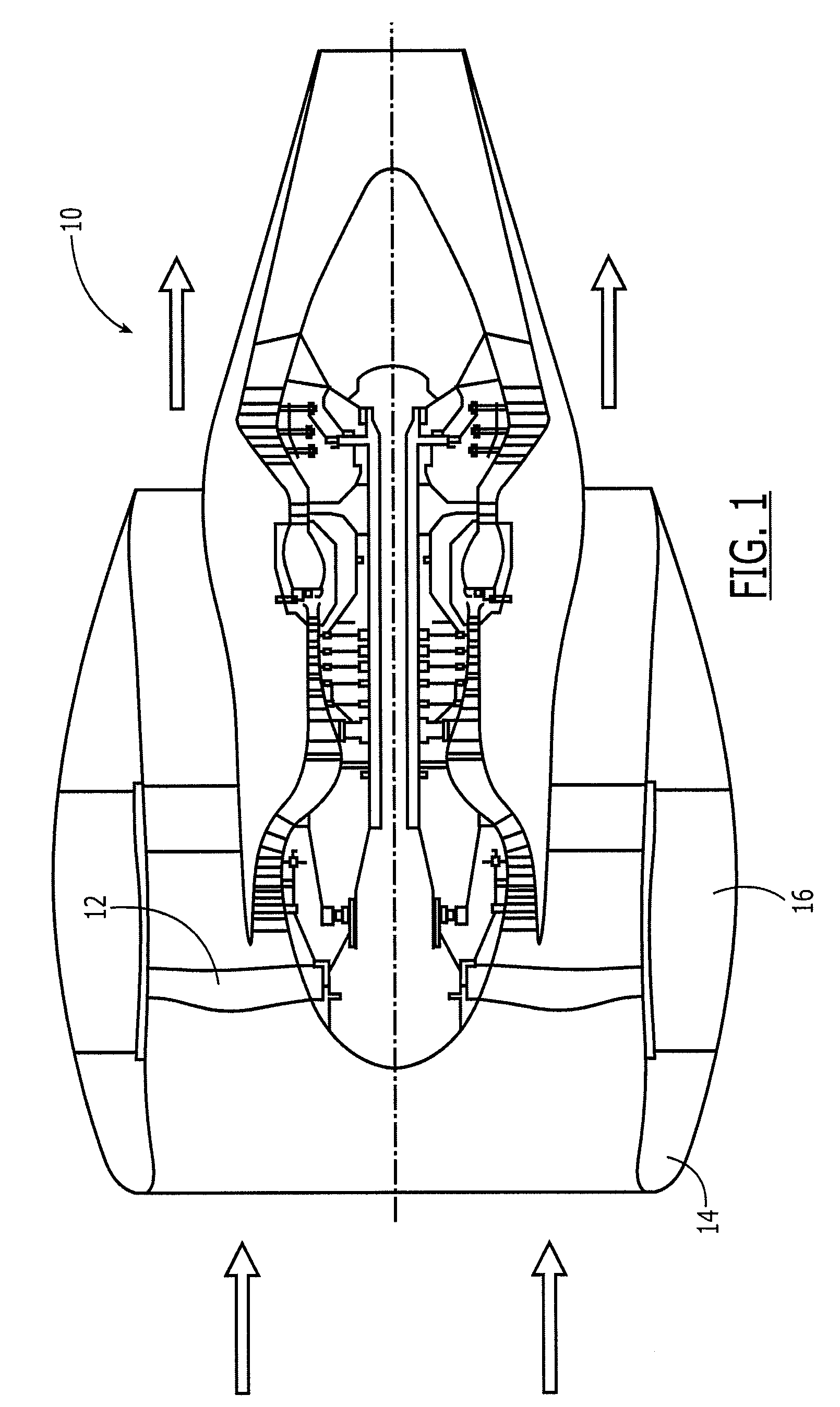Engine assembly, acoustical liner and associated method of fabrication
a technology of acoustic liner and engine, which is applied in the direction of non-positive displacement fluid engines, liquid fuel engine components, flooring insulations, etc., can solve the problems of reducing the useful life of the fan blade, generating significant noise, and affecting the structural integrity of the engine and/or nacelle structure, so as to increase the noise generated by the engine, the effect of increasing the weight of the engin
- Summary
- Abstract
- Description
- Claims
- Application Information
AI Technical Summary
Benefits of technology
Problems solved by technology
Method used
Image
Examples
Embodiment Construction
[0018]The present inventions now will be described more fully hereinafter with reference to the accompanying drawings, in which some, but not all, embodiments of the inventions are shown. Indeed, these inventions may be embodied in many different forms and should not be construed as limited to the embodiments set forth herein; rather, these embodiments are provided so that this disclosure will satisfy applicable legal requirements. Like numbers refer to like elements throughout.
[0019]An engine assembly 10 according to one embodiment to the present invention is depicted in FIG. 1. Although described below in the context of an aircraft engine, the engine assembly can be employed in a variety of different applications, if so desired. As shown, the engine 10 may be a turbofan engine. In the illustrated embodiment, the engine includes two shafts, while other engines may include a single shaft or three or more shafts. As shown in FIG. 1, in instances in which the engine 10 is an aircraft ...
PUM
| Property | Measurement | Unit |
|---|---|---|
| frequency | aaaaa | aaaaa |
| frequency | aaaaa | aaaaa |
| volume | aaaaa | aaaaa |
Abstract
Description
Claims
Application Information
 Login to View More
Login to View More - R&D
- Intellectual Property
- Life Sciences
- Materials
- Tech Scout
- Unparalleled Data Quality
- Higher Quality Content
- 60% Fewer Hallucinations
Browse by: Latest US Patents, China's latest patents, Technical Efficacy Thesaurus, Application Domain, Technology Topic, Popular Technical Reports.
© 2025 PatSnap. All rights reserved.Legal|Privacy policy|Modern Slavery Act Transparency Statement|Sitemap|About US| Contact US: help@patsnap.com



